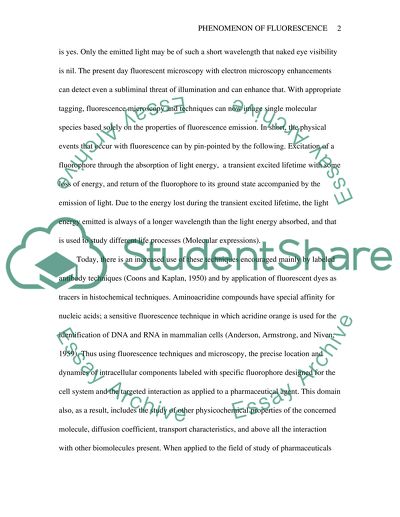Cite this document
(Fluorescence Impacting Pharmaceuticals Essay Example | Topics and Well Written Essays - 1750 words, n.d.)
Fluorescence Impacting Pharmaceuticals Essay Example | Topics and Well Written Essays - 1750 words. https://studentshare.org/health-sciences-medicine/1510463-fluorescence-and-pharmaceuticals
Fluorescence Impacting Pharmaceuticals Essay Example | Topics and Well Written Essays - 1750 words. https://studentshare.org/health-sciences-medicine/1510463-fluorescence-and-pharmaceuticals
(Fluorescence Impacting Pharmaceuticals Essay Example | Topics and Well Written Essays - 1750 Words)
Fluorescence Impacting Pharmaceuticals Essay Example | Topics and Well Written Essays - 1750 Words. https://studentshare.org/health-sciences-medicine/1510463-fluorescence-and-pharmaceuticals.
Fluorescence Impacting Pharmaceuticals Essay Example | Topics and Well Written Essays - 1750 Words. https://studentshare.org/health-sciences-medicine/1510463-fluorescence-and-pharmaceuticals.
“Fluorescence Impacting Pharmaceuticals Essay Example | Topics and Well Written Essays - 1750 Words”. https://studentshare.org/health-sciences-medicine/1510463-fluorescence-and-pharmaceuticals.


